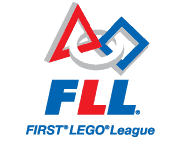Holonomic Drive Systems

Killough Mobile Robot Platform
In the Discover magazine (July 1997 edition), there is a picture (and some description) of the Killough platform. Using three motors, symmetrically placed, to govern the three degrees of freedom for a planar motion: two translation parameters, and a rotation.
It does this by making `linear wheels', which are powered in one direction and free to move in the perpendicular direction. (Normal wheels can be powered in one, and block sideways motion.) The inventor, Killough, achieves this by powering wheels 'sideways'. This demands a special construction: one 'linear wheel' is made with two real wheels, with ideally a circular cross-section, turned 90 degrees relative to each other, so that when one leaves contact with the floor, the other takes over. (If you find this hard to follow, try the movie at Markus Matern's site listed below.)
 The powering can be done in many ways; here I have used the old motor. As long as you make sure that it turns the wheels in each wheel assembly simultaneously, and with a 90 degree phase difference.
The powering can be done in many ways; here I have used the old motor. As long as you make sure that it turns the wheels in each wheel assembly simultaneously, and with a 90 degree phase difference.
When you are done you can power any combination of the motors; they generate motions in each of the wheels assemblies, and the linearity of the wheels means that these add as vectors, producing the total motion. Ideally, no component of motion gets lost (in ideal normal wheels, the motion component in the direction of the axle gets absorbed completely), though it may get canceled by a similar component of opposite sign. For instance, all motors turning in the same direction gives a rotation of the platforms; two turning in opposite directions and the third motor static gives a translation in the direction of the third.
To be a little more precise: the wheels are not rotated by the motors around their axles, but the axles are rotated in a plane. If the axle of the wheel is originally in the z direction, it rotates in the y-z plane. This will create motion in the y-direction, due to the fact that the wheels touches the ground 'sideways'. Also the wheel will be totally free to move in the x-direction, since that is how it spins on the (now rotated) axle. The second wheel in each assembly is just to make this always true: when the first leaves the ground due to its rotation, the second takes over.




Using Turntables






 The powering can be done in many ways; here I have used the old motor. As long as you make sure that it turns the wheels in each wheel assembly simultaneously, and with a 90 degree phase difference.
The powering can be done in many ways; here I have used the old motor. As long as you make sure that it turns the wheels in each wheel assembly simultaneously, and with a 90 degree phase difference. 






